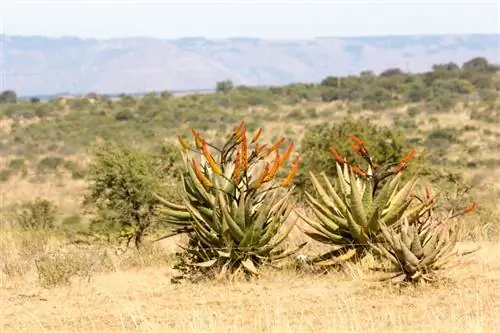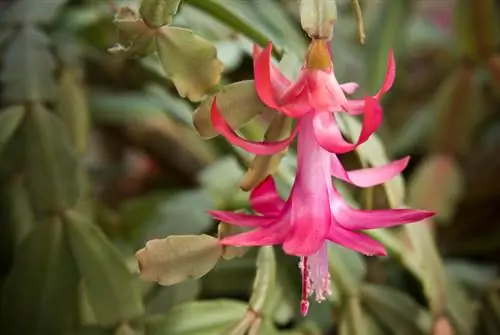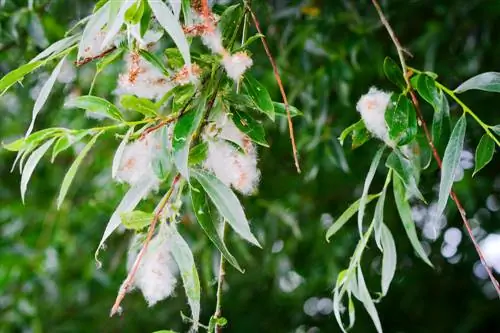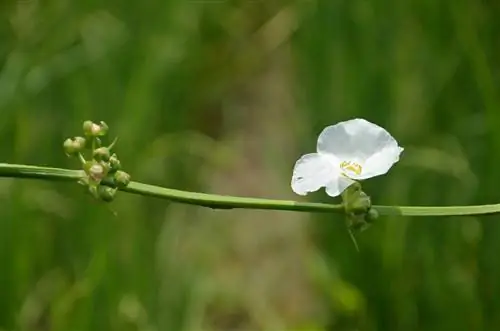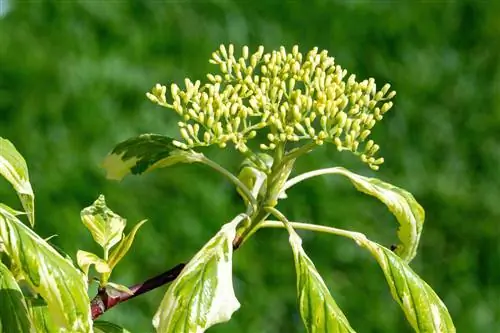- Author admin [email protected].
- Public 2023-12-16 16:46.
- Last modified 2025-01-23 11:20.
When we think of sunflowers, everyone thinks of the large, bright yellow flowers and the delicious seeds that ripen inside them. Hobby gardeners usually know much less about the leaves. A few interesting facts about the leaves of the sunflower.

What do sunflower leaves look like and what do they say about the plant?
The leaves of the sunflower are heart-shaped, serrated and hairy, grow oppositely and can be 20 to 40 cm long and 12 to 30 cm wide. They provide information about the he alth of the plant by hanging limply when it is dry, remaining small when there is a lack of nutrients, or identifying diseases and pests.
Shape and size of sunflower petals
The uniform green leaves of the sunflower are shaped like a heart. The edges are jagged or, better, serrated, as these leaf edges are called in technical jargon.
A clear identifying feature is the hairiness that can be found on the leaves. They grow oppositely, so there are no pairs of leaves like other plants.
The average leaf of the sunflower is 20 to 40 centimeters long and 12 to 30 cm wide - depending of course on the respective variety. The bigger the sunflower is, the bigger the leaves are.
What can be seen from the leaves
You can tell from the leaves of the sunflower whether the plant is he althy or sick and whether something is missing. If the leaves hang limply, you should water very quickly because they indicate that the soil is too dry.
If the leaves remain small and puny, the sunflower is missing important nutrients. Fertilize the plant with nettle manure (€19.00 on Amazon), horn shavings, cattle dung or seasoned compost.
Identifying diseases on the leaves
If a slimy coating forms on the leaves or they change color in summer, a disease may be responsible:
- Whitish, moldy-looking coating: powdery mildew
- Reddish spots and discoloration: downy mildew
- Large yellow spots: fungal diseases
You should cut off and dispose of affected leaves, but not in the compost. The plant is usually too moist or too dense.
Pests
Holes in the leaves indicate pests. Aphids, spider mites, thrips, bedbugs and caterpillars occur primarily on plants that are not well cared for.
Look at the undersides of the leaves and the soil beneath the plant, as this is where many of the pests hide.
Collect them or treat the sunflower with suitable, non-toxic sprays.
Tips & Tricks
Just like the flowers, the leaves of the sunflower always follow the sun. That's why a sunflower field looks completely different in the morning than it does at midday or evening.


